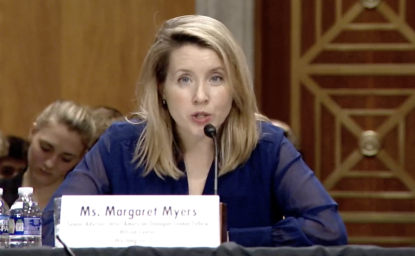Negotiating Sino-Italian Normalization, 1968-1970



CWIHP e-Dossier No. 55
Negotiating Sino-Italian Normalization, 1968-1970
Enrico Fardella
This e-Dossier introduces a selection of newly obtained and translated documents declassified by the Italian Foreign Ministry. The documents shed new light on the dynamics of Sino-Italian negotiations for diplomatic recognition in 1969 and 1970 and the influence of structural changes of the Cold War system on that process, namely the transformation of Chinese foreign policy vis-à-vis Moscow and Washington.”[1]
After the establishment of the People’s Republic of China (PRC) in 1949, the Italian government repeatedly tried to open diplomatic relations with the new leadership in Beijing, but the outbreak of the Korean War and the PRC’s exclusion from the United Nations (UN) led to the end of these early Italian initiatives. From 1950 until the beginning of 1960s, there continued to be little potential for the relationship, as Italy linked recognition to the resolution of the issue of admission of the PRC to the UN.
At the beginning of 1960s, three new factors emerged which would eventually facilitate Sino-Italian engagement: the opening of the Sino-Soviet split; de Gaulle’s courageous initiative towards Beijing; and the beginning of the center-left government in Italy. In particular, the new Italian government had a positive outlook towards the PRC and revised Italy’s previous policy, considering that any recognition of the PRC would have to come before—and not follow—admission to the UN in order to have any value for Beijing (See Document No. 1).
In 1964, these factors led to the opening of reciprocal commercial offices in Rome and Beijing that functioned as de facto embassies, though they were not enough to achieve proper normalization between the two countries. China’s role in Indochina obstructed that possibility, and Washington did not allow the government in Rome to formally recognize a country that was confronting American soldiers in Vietnam.
At the end of 1968, however, the deepening of the Sino-Soviet conflict prompted Beijing to revise its foreign policies towards Vietnam and the West. Italian diplomats perceived these changes as a new window of opportunity for Sino-Italian normalization, and promptly reported their optimistic views to the home government (Document No. 2).
There were also changes in Italy that facilitated a new round of Sino-Italian exchanges. The Italian Foreign Minister and Socialist leader, Pietro Nenni, believed that the recognition of PRC could bring his party the electoral support of those frustrated by the American and Soviet interventions in Indochina and Czechoslovakia, and he publicly declared on January 1969 that he intended to recognize the PRC.
Secret talks between Italy and China shortly began in Paris, and Beijing, stimulated by Nenni’s eagerness to achieve normalization, initially proposed an ambitious set of conditions to the Italians: first, Italy would recognize the government of the PRC as the sole legitimate government of China; second, Italy would recognize Chinese sovereignty over Taiwan; and third, Italy would break off of relations with Taipei and support Beijing's position in the United Nations (Document No. 3).
A few weeks later, the rising tensions at the border with the Soviet Union and the parallel demise of the Cultural Revolution improved Beijing’s willingness to achieve a compromise with Italy, as proven by the return of key diplomat Huang Zhen to Paris (Document No. 4 and Document No. 6).[2] Nenni, however, could not take advantage of these new events: a government crisis in July 1969 replaced him with Aldo Moro, a prominent leader of the Christian Democrats.
Moro was much more concerned than his predecessors about Washington’s reactions to Italian initiatives and their impact on the United Nations (Document No. 10). He, moreover, believed that Nenni had conceded too much to the Chinese (Document No. 6 and Document No. 9). In order to give to the Italian position greater traction vis-à-vis Beijing and Washington, Moro decided to coordinate the negotiations with the Canadians, who had also started diplomatic contacts with the Chinese (Document No. 8 and Document No. 11).
Between the end of 1969 and summer 1970, the Chinese softened their position in the negotiations and simply asked for the recognition of the PRC as the sole legitimate government of China, without any stance on the part of Italy on Chinese rights over Taiwan. At the same time, however, the Canadians shied away from concerted action with Italy, and in October unilaterally recognized the PRC as the sole legal government of China, while “taking note” of Beijing’s “position” over Taiwan.
As Moro himself wrote to the Italian President Saragat, to his dismay, this left the government in Rome “without cover and with no real freedom of choice as to the timing and conditions for recognition” (Document No. 12 and Document No. 13). The Chinese negotiators immediately asked Rome for the same conditions conceded by Ottawa, but the Italian diplomats managed to relax their request by taking note in the joint communiqué of November 6, 1970, of the Chinese “declaration”—instead of “position,” as in the Canadian communiqué—about the PRC’s rights over Taiwan (Document No. 14).
It was probably a meager consolation, but sufficient enough to demonstrate Italy’s desire to obtain a more advanced compromise than Ottawa. “We ignore the problem of Beijing’s territorial competence,” the Italian ambassador Ortona wrote to the Italian desk of the U.S. State Department, “and simply declare that China depends on Beijing’s government and nothing else. Consequently, nothing is compromised as for possible developments towards Taiwan.”[3]
If de Gaulle’s opening towards Beijing in 1964 anticipated a new era of “socialization” between China and the West, the timing of the Italian diplomatic initiative at the end of 1968 proved to be almost as prescient: Mao’s fight against revisionism during the Cultural Revolution and its impact on the unity of the socialist bloc created the conditions for a new diversification in the international system. As noted by the Italian diplomats at the time, in fact, the emergence of China as an ideological and political force, coupled with the beginning of European political and economic unification, worked to mark the end of the bipolar era. Sino-Italian normalization anticipated this historical process and sowed the seeds of the multipolar world we live in today.[4]
Enrico Fardella is currently Bairen Jihua Research Fellow at the History Department of Beijing University Research Associate at the Torino World Affairs Institute (TWAI), Research Scholar of the Machiavelli Center for Cold War Studies (CIMA), and Global Fellow with the Wilson Center.
List of Documents
Document No. 1
“Italian Policy towards the People’s Republic of China,” 27 November 1968
[Source: Historical Archive of the Italian Foreign Ministry. Obtained by Enrico Fardella and translated by Joe Caliò.]
Document No. 2
Note from the Director General of Political Affairs, Ministry of Foreign Affairs, 'Chinese Issue,' 20 December 1968
[Source: Historical Archive of the Italian Foreign Ministry. Obtained by Enrico Fardella and translated by Joe Caliò.]
Document No. 3
Secret Note from the Italian Embassy in Paris to Rome, 7 February 1969
[Source: Historical Archive of the Italian Foreign Ministry. Obtained by Enrico Fardella and translated by Joe Caliò.]
Document No. 4
Handwritten Note from the Minister of Foreign Affairs, 7 February 1969
[Source: Historical Archive of the Italian Foreign Ministry. Obtained by Enrico Fardella and translated by Joe Caliò.]
Document No. 5
Letter from Mario Crema to Pietro Nenni, 26 June 1969
[Source: Historical Archive of the Italian Foreign Ministry. Obtained by Enrico Fardella and translated by Joe Caliò.]
Document No. 6
Note from Ambassador Caruso for Ambassador Vinci, 14 July 1969
[Source: Historical Archive of the Italian Foreign Ministry. Obtained by Enrico Fardella and translated by Joe Caliò.]
Document No. 7
Letter no. 428 from Franco Maria Malfatti to Aldo Moro, 30 September 1969
[Source: Historical Archive of the Italian Foreign Ministry. Obtained by Enrico Fardella and translated by Joe Caliò.]
Document No. 8
Letter no. 429 from Franco Maria Malfatti to Aldo Moro, 30 September 1969
[Source: Historical Archive of the Italian Foreign Ministry. Obtained by Enrico Fardella and translated by Joe Caliò.]
Document No. 9
Letter from Aldo Moro to Franco Mario Malfatti, 1 October 1969
[Source: Historical Archive of the Italian Foreign Ministry. Obtained by Enrico Fardella and translated by Joe Caliò.]
Document No. 10
Aldo Moro’s Notes on Letter no. 61, 17 November 1969
[Source: Historical Archive of the Italian Foreign Ministry. Obtained by Enrico Fardella and translated by Joe Caliò.]
Document No. 11
Note on the Conversation between the Honourable Minister and the Canadian Minister for Foreign Affairs Sharp, at NATO in Brussels, 5 December 1969
[Source: Historical Archive of the Italian Foreign Ministry. Obtained by Enrico Fardella and translated by Joe Caliò.]
Document No. 12
Letter from Aldo Moro to President Giuseppe Saragat, 2 November 1970
[Source: Historical Archive of the Italian Foreign Ministry. Obtained by Enrico Fardella and translated by Joe Caliò.]
Document No. 13
Letter from President Giuseppe Saragat to Aldo Moro, 3 November 1970
[Source: Historical Archive of the Italian Foreign Ministry. Obtained by Enrico Fardella and translated by Joe Caliò.]
Document No. 14
Establishment of Diplomatic Relations between the Italian Republic and the People’s Republic of China, 28 November 1970
[Source: Historical Archive of the Italian Foreign Ministry. Obtained by Enrico Fardella and translated by Joe Caliò.]
[1] Some of these documents have already been published in Italian and Chinese in a volume edited by Prof. Ennio Di Nolfo on behalf of the Italian Senate. See: Di Nolfo, Ennio. La normalizzazione delle relazioni diplomatiche fra l’italia e la Repubblica Popolare cinese (The Normalization of Diplomatic Relations between Italy and the People’s Republic of China) Collana Storia e documenti del Senato della repubblica. Soveria Mannelli: Rubbettino, 2010.
[2] Due to his prestige Huang Zhen had recently been appointed to the Central Committee of the CCP by the IX CCP Congress.
[3] Olla Brundu correctly noted that the Chinese were probably willing to concede more to the Italians in order to send Washington a message of flexibility on the formula of recognition. Olla Brundu, Paola. “Pietro Nenni, Aldo Moro e il riconoscimento della Cina comunista.” Le Carte e La Storia 2 (2004): 44. See also Ortona, Egidio. Anni d’America: la cooperazione, 1967-1975. Bologna: Il Mulino, 1989: 259.
[4Olla Brundu correctly noted that the Chinese were probably willing to concede more to the Italians in order to send Washington a message of flexibility on the formula of recognition. Olla Brundu, Paola. “Pietro Nenni, Aldo Moro e il riconoscimento della Cina comunista.” Le Carte e La Storia 2 (2004): 44. See also Ortona, Egidio. Anni d’America: la cooperazione, 1967-1975. Bologna: Il Mulino, 1989: 259.]
Author

Associate Professor at the Department of Social and Human Sciences of University of Naples ‘L’Orientale’.

Cold War International History Project
The Cold War International History Project supports the full and prompt release of historical materials by governments on all sides of the Cold War. Read more


History and Public Policy Program
A leader in making key foreign policy records accessible and fostering informed scholarship, analysis, and discussion on international affairs, past and present. Read more

Explore More
Browse Insights & Analysis
A “Diplomatic Nuclear Explosion”? Sino-French Relations in the 1960s


